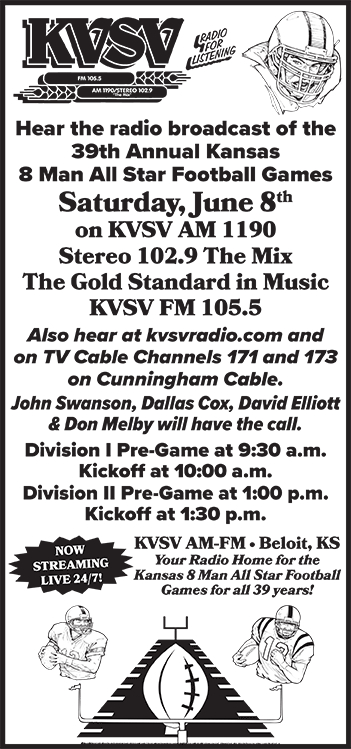

How to Survive a Blizzard in Your Car
By Terry Bailey
Be advised. Preparing for bad weather driving starts well before you put your key in the ignition. Waiting for the storm to strike is a recipe for disaster.
Growing up on a farm in rural Kansas, getting out in nasty weather was a given. The cows needed fed. The cows needed milked. Someone had to chop a hole in the ice so the cows could drink. The pigs needed cared for as well as the chickens. Whatever the weather, the animals needed cared for.
My Dad, in addition being a farmer, always worked construction jobs away from the farm. I never heard him say, "Oh the weather is too bad. I won't go to work today." Regardless of rain, snow, heat, wind, sleet, or flash flood, Dad went work. I grew up with the work ethic that said, "It something needed to be done, it had to be done. No excuses."
So...I learned to drive in all kinds of weather. Bad winter weather seemed to be the most challenging. Thanks to our Dad, he insisted we learn how to drive safely whenever we needed to be driving, my brother and I developed competence behind the wheel. After leaving the farm I did not have to get out and feed the cows, but I had to go to class when I was in college and go to work the rest of my life. Thanks to Gerald Bailey's tutelage, I always made it to where I was going and then back home.
As I got out and about in the real world, I learned I had a great advantage in driving not shared by others. Many drivers drive too fast and end up, at best, in the ditch, or, at worst, running into a utility pole or another car. These unschooled drivers did all the things a driver is not supposed to do in bad weather and ended up with unhappy results. They were not prepared.
I will pass on some of the things I learned to help you avoid catastrophe:
1. Slow down. Most accidents in bad weather are caused by driving too fast.
2. Have a full tank of gas.
3. Check the weather forecast for where you are at and where you are going.
4. Top off your windshield washer fluid
5. Make sure your tires are inflated properly.
6. Be sure to include a warm hat, mittens or gloves, and a warm jacket. Sturdy boots will be necessary if walking is necessary.
7. Build an "inclement weather" box. This could be a small toolbox or simply a cardboard box, but it should hold the things you might need to make your way in bad weather. The following is not an all-encompassing list but includes major items.
a. A flashlight
b. Matches in a waterproof container.
c. A Swiss army knife.
d. Two or three medium candles
e. Bottles of water
f. A few Hershey chocolate candy bars. The brand is not important. Hershey is my favorite. They are great for emergency snacks.
g. A small container of tissues.
h. A small crescent wrench, pliers, and vice grips.
i. Battery charger for cell phone or other devices
j. A bag of kitty litter to help get you un-stuck.
k. A small shovel to help you get un-stuck.
8. Additionally, a basic first aid kit should be included.
9. When cold weather approaches, I throw a couple blankets and/or a sleeping bag in my trunk for emergency use.
10. A snow/ice scraper
Before the popular use of cell phones, we would have to rely on someone stopping to offer help. Today, all you have to do is dial the appropriate number and help is on the way. That is if your battery is charged, and you are in a spot where service is available.
When you call for help, know where you are. The more specific directions to give to Triple A or the tow truck service or your best friend who had a hefty four-wheel drive pickup, the quicker help will arrive. If your directions to your helper is, "Somewhere south of Beloit" that is a pretty big area for someone to look for you. Knowing your location as specific as possible will save everyone involved heartache.
When considering inclement weather travel, ask yourself these important questions:
1. Do I have to travel? With my dad and his livestock, the distance was short and there was a critical need to feed his cattle. The risk factor was quite low. While it was quite cold and uncomfortable, worst comes to worst, he could have walked home with little trouble. If it is not absolutely necessary, it is best to stay home where you are safe.
2. If you do travel, do you have your emergency kit? Have you notified someone of your travel plans? Is your car's gas tank topped off and is your cell phone fully charged?
Finally, the big question. It is so big; it is a life and death question. If you become stranded, should you stay with your car or should you try to get out and walk to safety?
The correct answer is in almost all situations, you are better off to stay with your car and wait for help to arrive.
Leaving the safety of your car and attempting to walk for help is dangerous, very dangerous. Even with warm clothing, your body will lose heat quickly outside in cold weather with a strong wind blowing. It does not take long before hypothermia begins to set in. With that comes confusion and cloudy thinking.
With the wind blowing swirling snow all around it is easy to become disoriented. White-out conditions make it impossible to know where the road is. The entire world is one flat sheet of white. It is easy to walk off in a direction in which no help is available.
During the height of a blizzard, generally the only vehicles on the road will be D.O.T. emergency vehicles. They may spot your car and check on you. If they do not see you, you may be isolated for a period of time. If you have a full tank of gas and you run your engine intermittently, you can stay warm for several hours. Burning one of the candles in a closed car will add considerable heat inside the vehicle. Nibbling on one of your chocolate bars will add needed calories to your body's heat system. If you call someone and accurately report your location to them, help should arrive soon. It could be possible that you are stranded in a location where cell service is unavailable. Even so, you should be able to safely ride out the storm in the safety of your vehicle.
One final word of caution, it is much better to have cold weather survival equipment and never have to use it than to need the equipment and not having it. It truly could be a matter of life and death.
Other News
- MITCHELL COUNTY COMMISSIONERS - Monday, July 22, 2024
- BELOIT CITY COUNCIL – Wednesday, July 17, 2024
- MITCHELL COUNTY COMMISSIONERS - Monday, July 15, 2024
- MITCHELL COUNTY COMMISSIONERS - Monday, July 8, 2024
- BELOIT CITY COUNCIL – Wednesday, July 3, 2024
- MITCHELL COUNTY COMMISSIONERS - Monday, June 24, 2024
- BELOIT CITY COUNCIL – Wednesday, June 19, 2024
- MITCHELL COUNTY COMMISSIONERS - Monday, June 17, 2024
- MITCHELL COUNTY COMMISSIONERS - Monday, June 10, 2024
- BELOIT CITY COUNCIL – Wednesday, June 5, 2024
- MITCHELL COUNTY COMMISSIONERS - Monday, June 3, 2024
- MITCHELL COUNTY COMMISSIONERS - Tuesday, May 28, 2024
- MITCHELL COUNTY COMMISSIONERS - Monday, May 20, 2024
- BELOIT CITY COUNCIL – Wednesday, May 15, 2024
- MITCHELL COUNTY COMMISSIONERS - Monday, May 13, 2024
- MiTCHELL COUNTY COMMISSIONERS - Monday, May 6, 2024
- BELOIT CITY COUNCIL – Wednesday, May 1, 2024
- MITCHELL COUNTY COMMISSIONERS - Monday, April 22, 2024
- BELOIT CITY COUNCIL – Wednesday, April 17, 2024
- MITCHELL COUNTY COMMISSIONERS - Monday, April 15, 2024



FCC Public File - KVSV AM / KVSV FM | FCC EEO | FCC Applications
©2024 KVSV Radio. Powered by Pluto Sites.